How to fertilize the land in autumn: what fertilizers to apply for digging to restore soil fertility
Most gardeners are accustomed to harvesting the last crop from their beds in the fall, forgetting that after that they need to properly prepare the site for the next season. Namely, it is very important to engage in the restoration of soil fertility, to introduce certain "autumn" fertilizers into it.
Let's talk about how we can improve the fertility of our soil in the fall, what fertilizers should be applied for digging in order to get an even larger harvest next year.
Attention! Next, we will talk about fertilizing in the fall on a garden bed for digging for growing vegetables.
About, how to feed fruit trees in autumn, eg, apple trees (all the rest of the fruit are fertilized in the same way), you can read in this material, berry bushes on the example of currants — here.

Content
Why fertilize in the fall
Any fertilization of the soil is aimed at restoring or increasing its fertility. Obviously, the vegetables that grew all season in the garden pulled out a lot of nutrients from the soil, so after harvesting (harvesting) some of them you need to return to the ground, and this must be done in autumn, not in spring.
Accordingly, the fertilizer application rate is also adjusted depending on which plants grew earlier in the garden, what they were fertilized with.
What fertilizers need to be applied in the fall for digging
Plants need all macro- and microelements (naturally, the needs of all crops are different, therefore, the doses of fertilizers should be different).
In the fall, only certain fertilizers can and should be applied.
To restore soil fertility, you can use both organic and mineral fertilizers, and even better combine them (of course, if you are not a supporter of exclusively organic farming).
So, in the fall it is recommended to make such organic fertilizers like fresh manure, humus, compost, wood ash, and phosphorus and potash mineral fertilizers.
Further we will get acquainted in more detail with the specific names of "autumn" fertilizers and the norms of their use.
Planting green manure in autumn
Recently, the use of green manure has begun to gain popularity to restore soil fertility, improve the structure, improve its health and enrich it with useful micro- and macroelements.
Read more! About, how to sow green manure correctly and when to mow them - told in this article.
And about that what are the varieties of green manure and which are better to sow before / after certain crops - here.
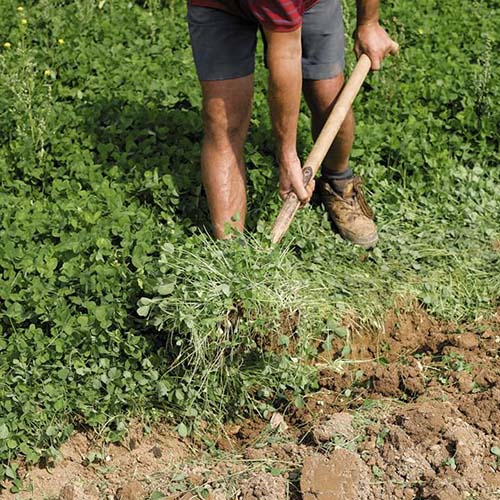
Organic fertilizers (fresh manure, humus, compost, ash)
Remember! Organic matter is needed not only for plant nutrition, but also for development of soil microorganismsas well as for vital functions of earthworms, the presence of which clearly indicates that the soil in your area is healthy and fertile.
In autumn, the following organic fertilizers can be applied:
- Fresh manure or chicken droppings - 4-8 kg per square meter of the garden.
You need to be careful with fresh manure. If it is still possible to bring it in for digging in the fall (however, it is not very effective), then in the spring in no case.
The fact is that the main danger of using fresh manure or dung is the presence in it of many weed seeds, eggs of harmful insects (the same helminth eggs), so it is much better to use manure humus.
Advice! However, as an option, you can put fresh manure or chicken droppings in plastic bags in the fall, or simply cover it with a film and leave it in your summer cottage so that moisture does not get inside and useful macronutrients do not evaporate. Such a six-month exposure (including freezing) will help nullify the presence of various hormones in it, and will also lead to the death of most weed seeds.
- Humus - 6-12 kg per sq.m.
- Compost - 6-12 kg per sq.m.
Don't be confused! Humus is rotted manure (lying down for 3 years or more), while compost is obtained by decomposing organic residues (again, within 3-4 years).
However, when they say "leaf humus", they mean "compost".
- Peat (excellent moisture retention) - 6-12 kg per sq.m.
Video: restoring soil fertility in autumn using organic matter (compost)
Some experts believe that it is possible to enrich the soil with organic matter in the fall by introducing rotted sawdust, straw or haydigging or mulching the beds with them.
Indeed, this makes sense, especially if you mulch the beds with them, to which fresh manure was introduced.
However, in this case there is a chance to attract rodents to your site (mice).
In addition, excellent organic potash fertilizer is an wood ash (100-200 grams per square meter, but not more than 500 grams, it is especially important not to overdo it with ash when preparing a bed for potatoes, otherwise it may get scab).
Moreover, in addition to the high potassium content, ash also rich in phosphorus, calcium and other important trace elements, and also able to deacidify the soil (to lower its acidity by making it more alkaline).
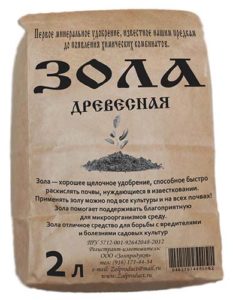
Soil ameliorants (leavening agents)
To improve the structure of the soil, special soil ameliorants (loosening materials) are used, the most effective of which is coarse sand. Also suitable for you vermiculite.
By the way! Organic fertilizers (humus, compost) are also excellent soil leavening agents. It is best to combine them, i.e. share.
Phosphate and potash mineral fertilizers
Phosphate fertilizer
It is worth knowing that phosphate fertilizers for a very long time they come to the roots of the plant, which means that they must be introduced in advance, i.e. in the fall, so that the earth has time to absorb them by spring.
- Superphosphate - 30-40 grams per sq. meter of the garden.
- Double superphosphate.
Advice! More details about the use of superphosphate read in this material.
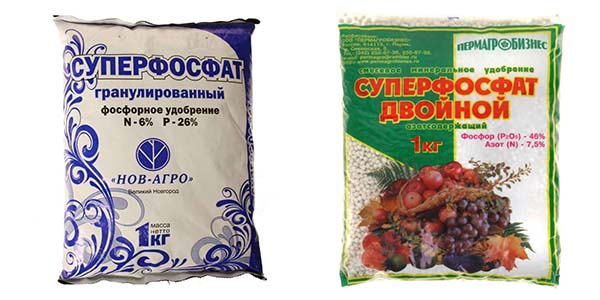
Potash fertilizers
Unlike phosphorus, which is almost completely retained in the soil, some of the potash fertilizers can be washed out by the spring, so they will have to be partially reintroduced (directly into the hole when planting or as liquid dressings during the direct vegetation of the plant).
- Potassium sulfate (potassium sulfate) - 20-30 grams per sq. meter of the garden.
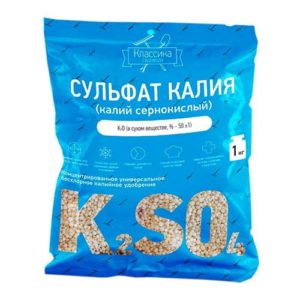
- Kalimagnesia (+ with magnesium).
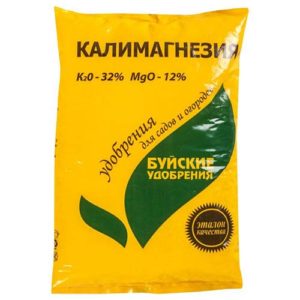
- Potassium salt (chloride fertilizer).
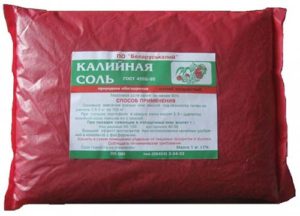
- Potassium chloride (potassium chloride).
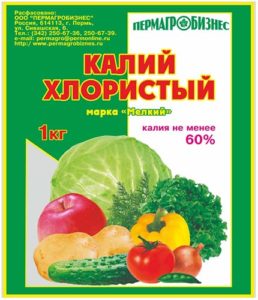
Worth knowing! In the fall, you can add chloride potash fertilizers, because next year, a minimum amount of chlorine will remain in the soil (it will be washed out). Another thing is that in spring and summer their use is very undesirable.
Ready-made "autumn" fertilizers
Especially for "lazy" gardeners and summer residents, ready-made fertilizers have been created for application in the fall (they just say "Autumn"). For example, this:

What fertilizers can not be applied in the fall
Almost all nitrogen (urea, calcium nitrate) and other instant mineral fertilizers (eg, potassium monophosphate) it makes no sense to apply in the fall, because until spring, they will be completely washed out of the soil (not preserved). In other words, your efforts and money will be wasted (buried in the ground) in vain.
Interesting! However, ammonium nitrate (but better in the spring) and especially ammonium sulfate in the fall can be introduced. Because nitrogen in ammonium form is not washed out from the soil.
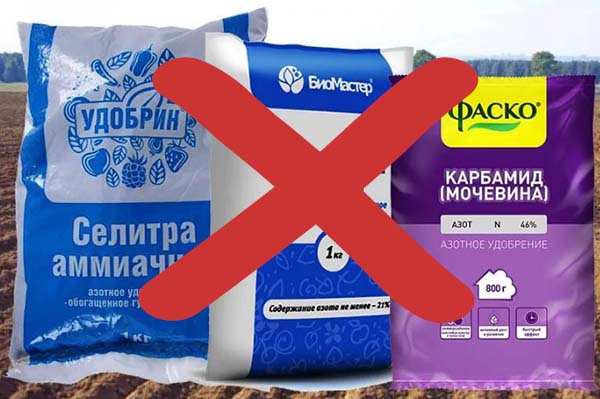
Also, in the fall, you should not make individual microfertilizers, not counting complex ones, for example, included in the composition of manure, humus, compost or wood ash.
How to fertilize correctly in the fall
- Fertilizers need to be applied evenly and to the full depth dug up layer.
- Necessarily needed comply with the fertilization rate (especially mineral - they are given in the instructions on their packaging).
Important! An excess of mineral fertilizers in the soil can harm your plants. Moreover, their excessive amount negates the presence of various microorganisms and earthworms in the soil, which contribute to soil fertility.
- It is obvious that the choice and rate of application of various fertilizers is influenced by variety (type) of soil (sandy, sandy loam, loamy, clayey, chernozem), its acidity (acidic, neutral, alkaline) and other properties.
For example from sandy soil highly nutrients are quickly washed out, therefore, to hold them, you need use organic - the same compost, humus, peat, which will also better to retain moisture.
By the way! The site already has separate materials about how to determine the acidity of the soil, and change (decrease or increase).
- Water supply and soil heating also affect the fertilization rate.
So if you have enough warm soil (high beds) and there is a possibility water the plants oftenthen you you can reduce the dose of fertilizers. If the soil coldthen necessarily to raise.
- Some fertilizers incompatible and their better not to mix.
The point is that in this case part of nitrogen is lost in manure, and mixing deoxidizers such as dolomite flour, ash and lime with phosphorus mineral fertilizers leads to the fact that part of the phosphorus is converted into an insoluble form.
What if you really need to deoxidize the soil?
In autumn, apply to the soil dolomite flour, as well as mineral potash fertilizers, and in early spring - phosphoric and nitrogen fertilizers.
By the way! Basically, dolomite flour can be mixed with phosphorus fertilizers, but just lime is very undesirable.
Deacidification of soil in autumn
Most vegetable crops prefers soils with a neutral or slightly acidic reaction (acidic soils are loved only by heather crops - heathers, azaleas, rhododendrons, blueberries, as well as hydrangeas, conifers, but the latter require less acidic ones). Accordingly, if your soil is too acidic, then you need to lower its acidity, i.e. deacidify.
It is believed that deacidify the soil best in autumn, since this is a rather lengthy process.
How to determine the acidity of the soil on the site
Advice! The site already has a detailed article about how to measure soil acidity.
- You can use special test strips ("Litmus test").
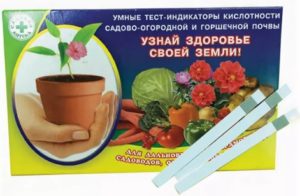
- Special acidity measuring instruments.
You can buy them (test strips and the device) both in garden centers and order in online stores.
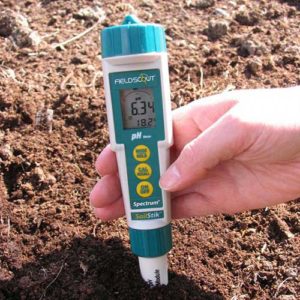
- Of course, you can take the soil sample to a special laboratory (paid service!).
- The easiest, but not the most revealing way, but completely free, is to see what weeds grow on your site... If the soil is acidic, then you should grow horsetail, wood lice, sedge, plantain.
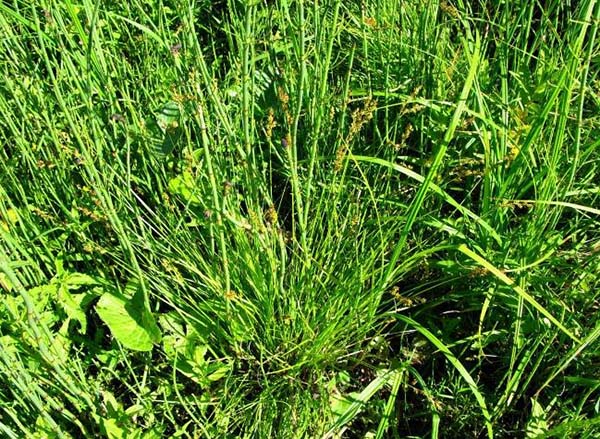
How to deoxidize the soil (make it neutral or slightly acidic)
Note! On methods of soil deoxidation read in this detailed material.
To lower the acidity of the soil, you need to add the following deoxidizers for digging in the fall:
- Limestone or dolomite flour (also enriches the soil magnesium and calcium).
Note! The application rate of dolomite flour depends on the type of your soil and the degree of its acidity. See package instructions for details.
As a rule, if the soil sandy, then for its deoxidation it is required less dolomite flour than clay.
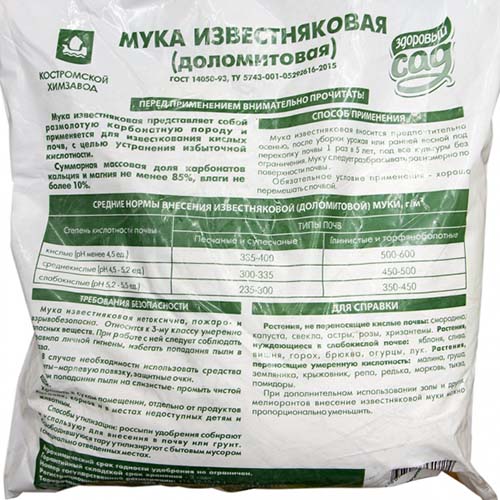
- Lime fluff.
Important! To deoxidize the soil, it is most preferable to apply exactly dolomite flour, not lime, because the latter binds phosphorus and makes it less available.
- Wood ash (from 100 to 500 grams per square meter).
Video: what fertilizers to apply to the soil in the fall


Is it possible to apply fertilizers without digging / loosening: just scatter and leave until winter?